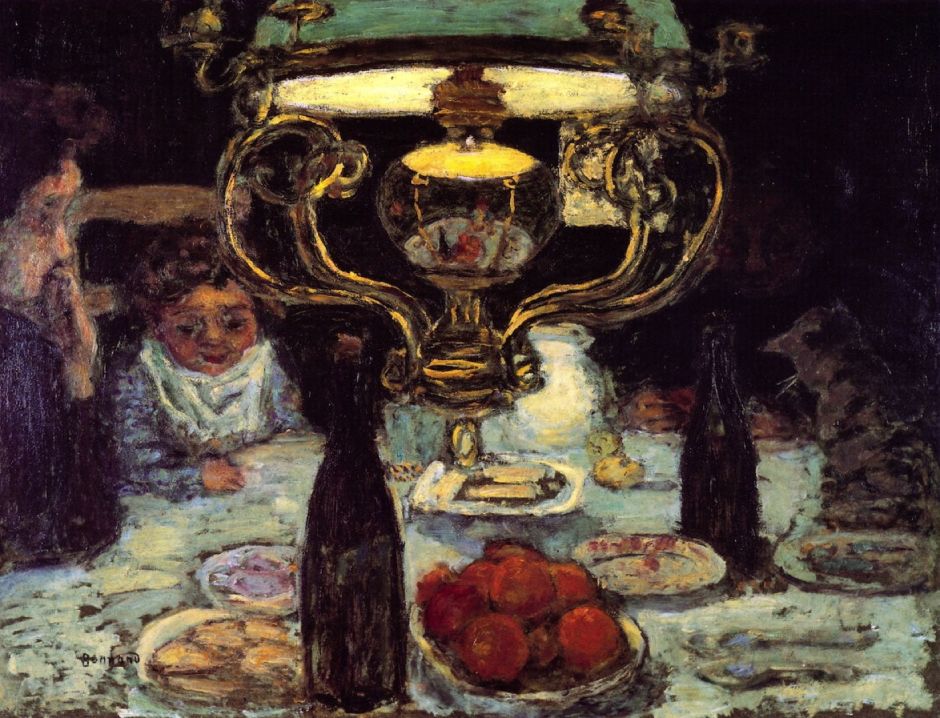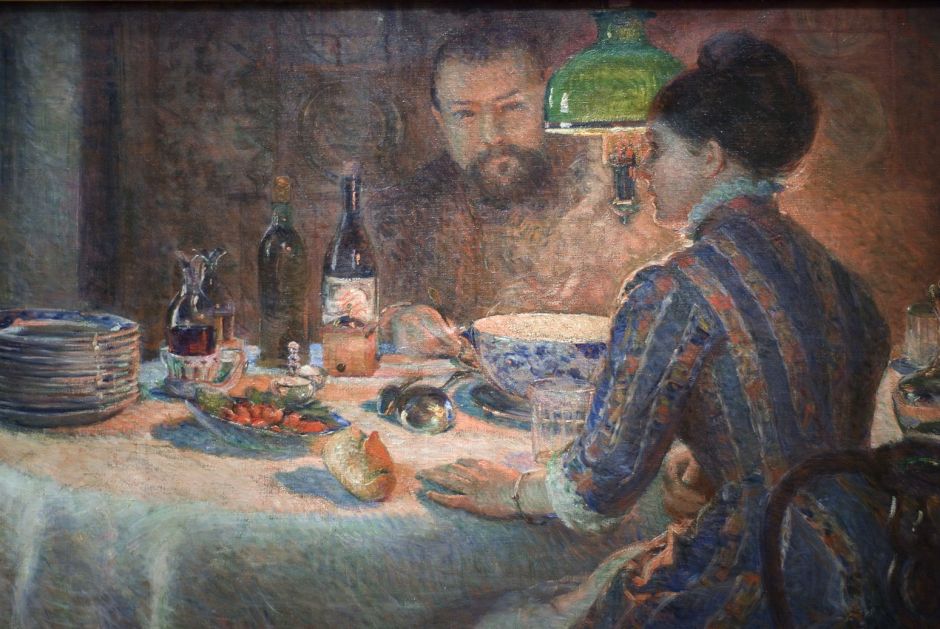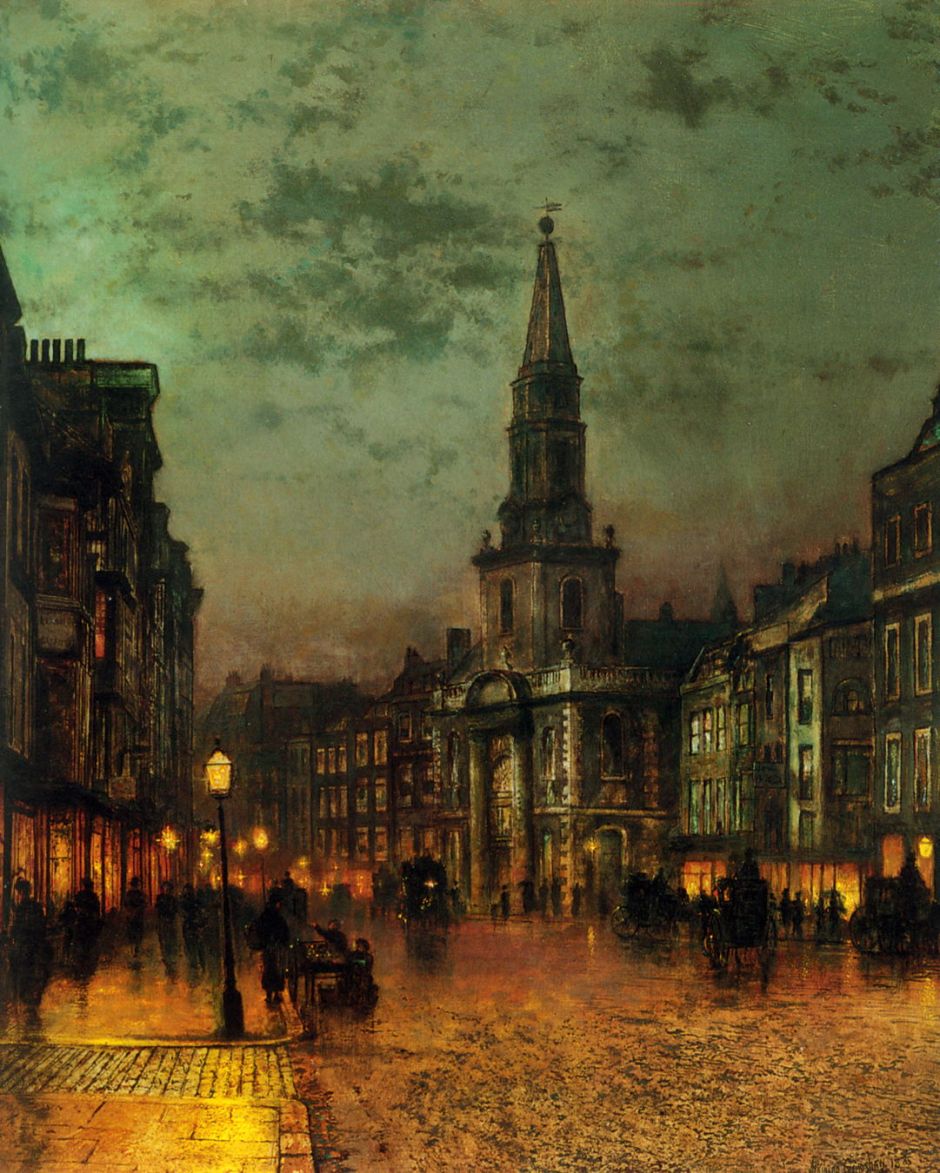Oil lamps were essential aids to painters, as they enabled them to work after dark before the advent of gas and electric lighting. They also enabled the use of chiaroscuro.

Adam Elsheimer, in his small oil on copper painting Jupiter and Mercury with Philemon and Baucis (1609-10), shows Philemon (right) and Baucis (centre right) giving their hospitality generously to Jupiter (left) and Mercury (centre left), in their tiny, dark cottage, lit only by a small oil lamp.
The light of oil lamps was key to many of the later chiaroscuro paintings of Joseph Wright of Derby. Here I show just two examples where the source of light is visible.

In 1766, Wright exhibited one of his most enduring images of the period, A Philosopher Giving that Lecture on the Orrery, in which a Lamp is Put in Place of the Sun. The orrery, a miniature planetarium showing the movements of the planets and their moons, was an impressive high-end Grand Orrery, an expensive device which would undoubtedly have captivated the minds of those able to gaze at it, bringing their enlightenment.

Wright’s Philosopher by Lamp Light from 1769 was actually a pointed reference to the Royal Academy, being a reworking of a painting in the style of Salvator Rosa, warning the new members of the Academy of the transience of earthly glory.
In the late nineteenth century, when chiaroscuro as a technique was all but dead, the lighting effects of oil lamps were still in widespread use.

Harriet Backer’s Syende kvinne ved lampelys (By Lamplight) from 1890 shows an interior lit by a kerosene lamp on the table, although there doesn’t appear to be any implication that this seamstress is particularly tired or poor.
Into the early twentieth century, paintings showed families and friends gathering around the warm light of an oil lamp for dinner or a social occasion.

Of Pierre Bonnard’s many paintings exploring light and its effects, The Lamp from about 1899 stands out for its full-blown chiaroscuro lighting and his elaborate use of reflection in the globe under its oil lamp.

Under the Lamp, painted by Marie Bracquemond in 1887, shows Alfred Sisley and his wife dining in the Braquemonds’ house at Sèvres, in an outstanding Impressionist oil painting.
Oil lamps appear in other situations that were more everyday.

An oil lamp plays a central role in Edgar Degas’ enigmatic narrative painting Interior, also known as The Interior and even The Rape, from 1868-69. The man and woman in this bedroom are clearly a couple, but just what they’re up to remains obscure.

John Atkinson Grimshaw uses the warm mixture of gaslight and oil lamps to good effect in this cityscape of Blackman Street, London from 1885. This is on the south bank of the River Thames, not far from Borough in south London.
In their heyday, oil lamps lit everywhere: streets, shops, bedrooms, carriages, ships and lighthouses. There were also some special forms of oil lamp that occasionally appear in paintings.

Constantin Meunier’s painting of Miner at the Exit of the Shaft shows several coal miners enjoying a few moments to smoke and relax at the pit head. Three are carrying safety lamps, which were used to minimise the risk of underground explosions even though they had flames inside them. These were developed in about 1815, after a long succession of mine disasters caused by explosions, and weren’t replaced by electric lamps until after 1900.

